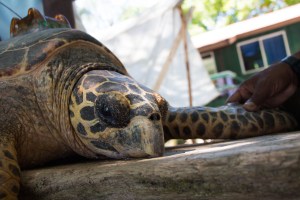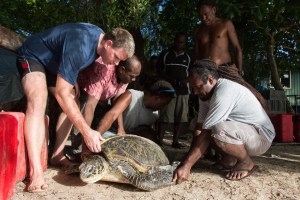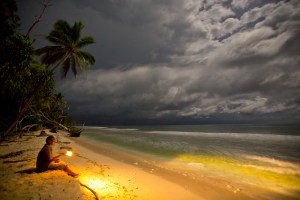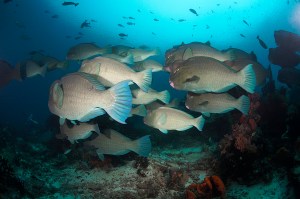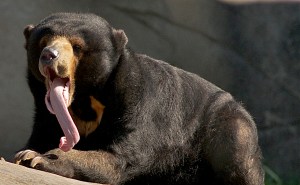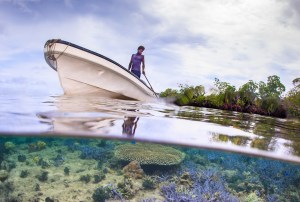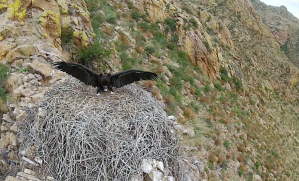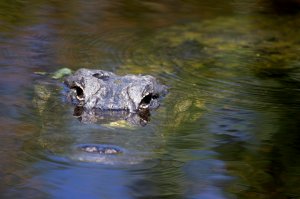Science Writer
Page 28
-
Unraveling the Mystery of Hawksbill Sea Turtle Migration
Join Conservancy scientists in the Arnavon Islands, where they’re tagging hawksbill sea turtles with satellite trackers to discover where and when these turtles migrate in between nesting.
Justine E. Hausheer
-
A Day in the Life of a Field Scientist: Arnavon Islands Edition
Follow science writer Justine E. Hausheer along on a typical day of scientific fieldwork in the Arnavon Islands: tagging turtles, trapping for nautilus, handlining fish, and catching crocs, all in the name of science.
Justine E. Hausheer
-
A Slaughter on Sikopo: Poaching Threatens Hawksbill Turtles in the Arnavons
Grim news on two of the tagged hawksbill turtles highlights the need for the Conservancy's investigation into the illegal hawksbill trade in the Solomon Islands.
Justine E. Hausheer
-
Hyperstability: The Achilles’ Heel of Data-Poor Fisheries
New research indicates that hyperstability — when catches remain high even as fish are rapidly depleted — could be a major challenge for assessing data-poor coral reef fisheries.
Justine E. Hausheer
-
Weird Conservation Part 2: The Even Stranger Side of Saving Endangered Species
Conservation gets weird, yet again. Read on for tales of lizard robots, bird deodorant, and atomic bombs.
Justine E. Hausheer
-
Follow that Grouper: What Migration Data Tell Us About Locally Managed Marine Conservation
New research shows that minimal expansions to community-based protected areas in Melanesia can greatly enhance protection of fish populations.
Justine E. Hausheer
-
Can Drones Help Monitor Vultures on Mongolia’s Eastern Steppe?
Conservancy scientists are testing whether unmanned aerial vehicles, or drones, are an effective tool to monitor Cinereous Vulture populations in Mongolia’s Kherlen Toono Uul Nature Reserve.
Justine E. Hausheer
-
The Alligator in the Basement: Breeding Bird Colonies Benefit Alligator Health in the Florida Everglades
Scientists have discovered that alligators living near nesting bird colonies in the Florida Everglades are healthier than those without access to this food resource.
Justine E. Hausheer
